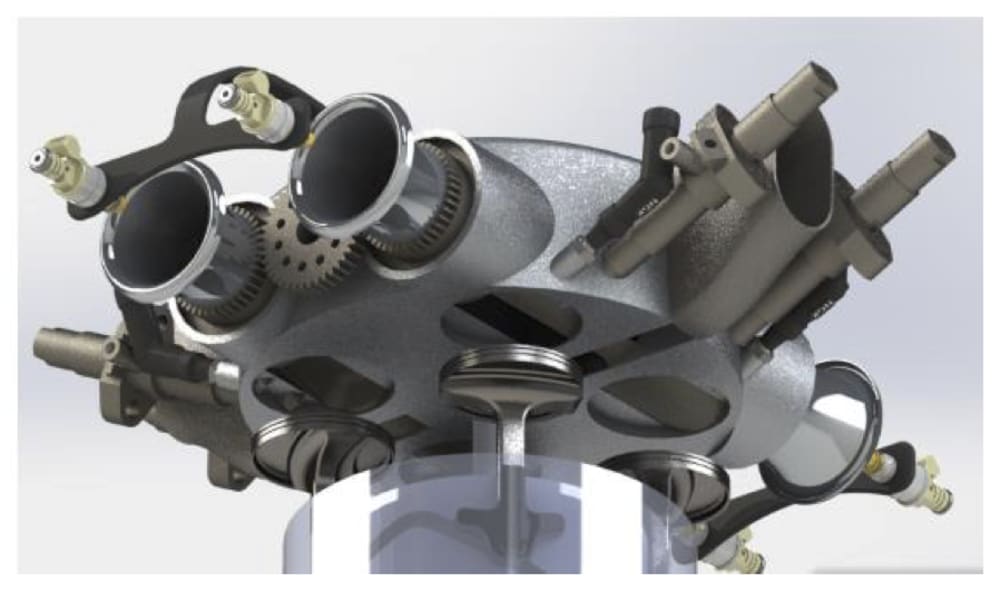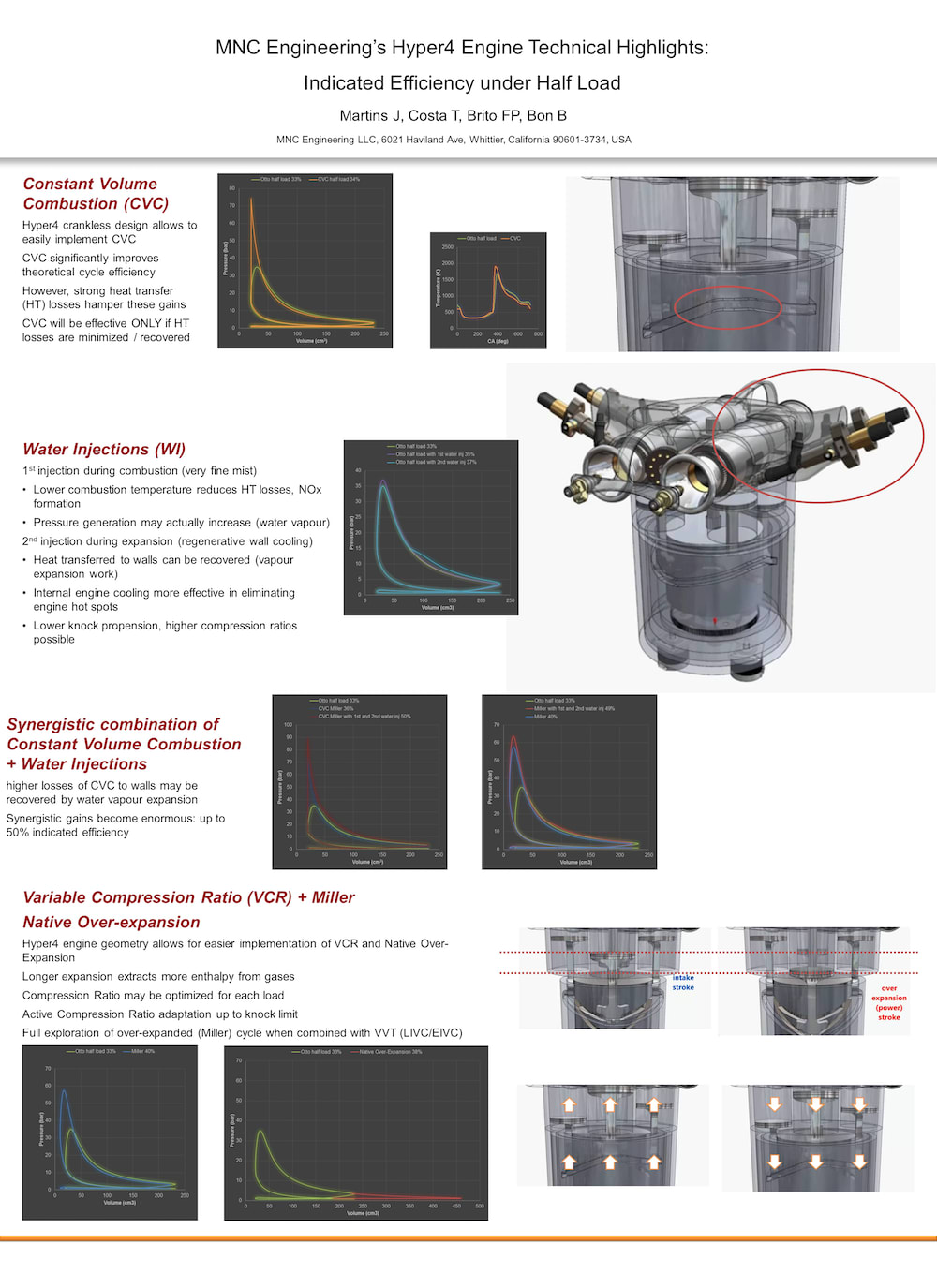

The Hyper4 improves the fuel efficiency of internal combustion engines by up to 75% (as reflected by Simulink Matlab and Converge CFD modelling software), approaching 50% brake thermal efficiency in a unique, compact axial design that is both straightforward and inexpensive to manufacture. Unlike a standard inline engine, the incorporation of constant volume combustion, variable compression ratios and over expansion (Miller/Atkinson cycle) is virtually effortless. These fuel saving strategies are well known, researched and documented but are extremely difficult to implement in a crankshaft driven engine. The configuration allows for the inclusion of rotary valves and water injection for internal cooling and the reduction of NOx emissions. The exclusive use of two nested, counter-rotating barrel cams employing varied lengths of sinusoidal cam tracks allows for this flexibility and solves the major problems which plagued prior axial engine designs.
The cam tracks provide for the different piston stroke lengths and dwell at TDC and BDC. The cam assembly is movable (closer to or further from the engine header) alone a splined output shaft to provide infinitely variable compression ratios during engine operation. A four cylinder engine provides four power strokes per output shaft revolution and the fixed length displacement arm guarantees a dramatic torque multiplier effect. For the major length of the power (expansion) stroke (up to 80%), the cam tracks apply the combustion’s pressure at 90 degrees to the output shaft minimizing the amount absorbed by the block. Further, the counter-rotating cams will eliminate the flywheel and due to the low compression ratios we can achieve via VCR, a combined generator/starter could be used instead of a dedicated starter motor providing additional weight savings.
This engine may be utilized where any internal combustion engine is currently in place, but in particular the automotive and light truck marketplace which is about 60 million units, worldwide, per year. This would significantly reduce fuel consumption and concurrently reduce CO2 emissions, which will help improve the environment. Consumers would gain from reduced costs/driven mile, builders by reduced manufacturing costs and petroleum companies by extending their proven crude oil reserves. The compactness of the engine would give car designers more liberty in developing their product for both style and aerodynamics, and its lesser weight would beneficially impact on the entire vehicle’s structure.
The entire engine is built from standard stock materials and no castings need be employed in its manufacture, saving both time and money while reducing waste. Nor does it incur the use of exotic materials or any new engineering disciplines.
Clearly superior, in all areas, to the ubiquitous inline crankshaft engine, what’s not to like.
Video
-
Awards
-
 2016 Top 100 Entries
2016 Top 100 Entries -
 2016 Top 10 Most Popular
2016 Top 10 Most Popular
Like this entry?
-
About the Entrant
- Name:Bernie Bon
- Type of entry:teamTeam members:Bernie Bon Jorge Martins Francisco Brito Tiago Costa
- Software used for this entry:Converge CFD, Matlab Simulink
- Patent status:patented








